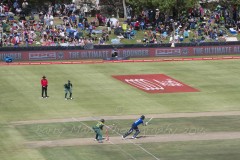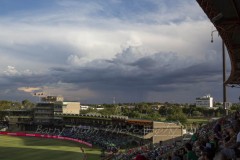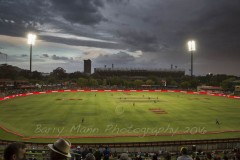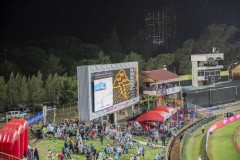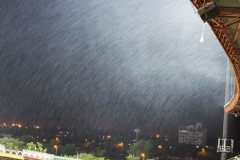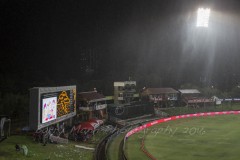Blog
This past weekend saw the running of the 49th Roof of Africa Motorbike Endurance Race in the mountain Kingdom of Lesotho. Nicknamed the “Mother of all Endurance” races it is certainly not for the faint hearted!
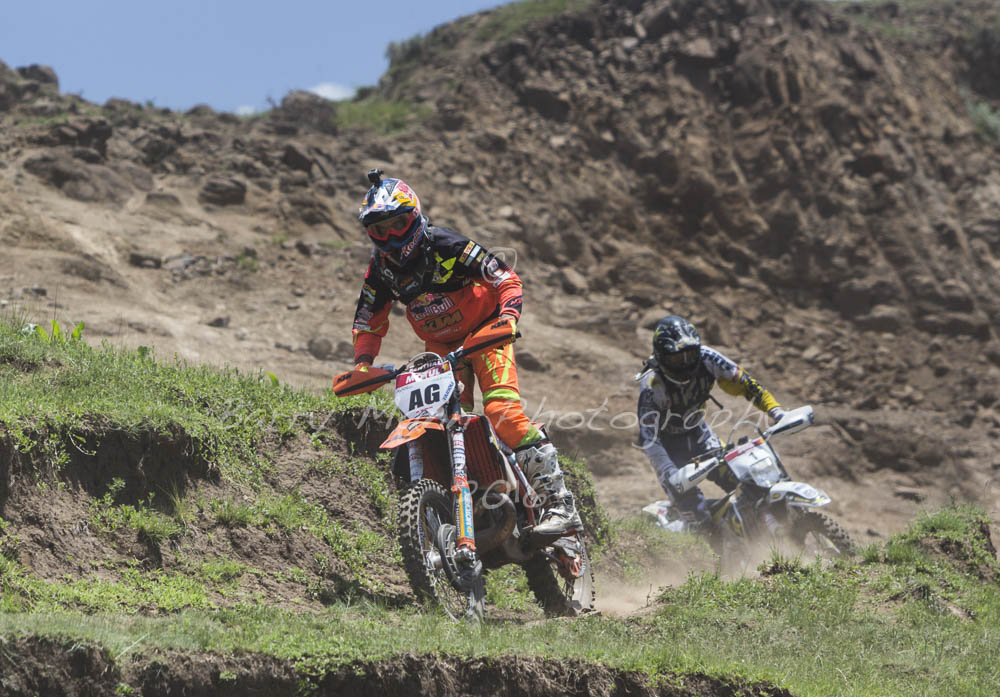
Alfredo Gomez Cantero (AG) & 2015 champion, Graham Jarvis battling for the lead in the Motul 2016 Roof of Africa race.
For those of you who don’t know what the ‘Roof’ is, the race is made up of 4 sections over 3 days. Day 1 comprises of the Round the Houses event through the city of Maseru, the capital of Lesotho followed by a time trial to determine the starting positions for Day 2. Days 2 & 3 are full on endurance motorbike racing through the mountains and valleys of Lesotho, over high mountain passes, down perilous rock slopes, through rivers & past villages that haven’t changed over hundreds of years. The riders are split into 3 categories, gold, silver & bronze & each group rides over different routes graded by ability. At the end the times for each event are added together to give each rider their overall time.
This year was the first time that I had managed to see the race and I have to say that I was in awe of the riders physical ability to get to the end & still be able to stand! I was fortunate enough to be able to capture the two leading riders coming down the mountain to the refuelling point at Makhaleng Causeway. At this point Alfredo Gomez Cantero (AG) was leading his rival & 2015 winner Graham Jarvis (1) & also had a 10 minute advantage from the previous 2 days racing but a quicker refuel and a sprint to the finish saw Graham Jarvis retain his title by a mere 9 seconds after 16 1/4 hours of riding!
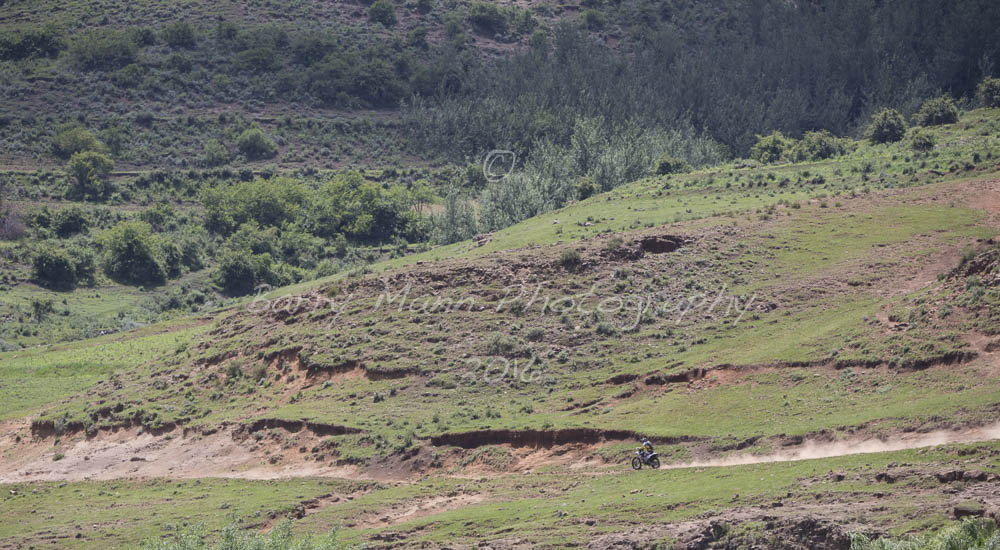
Graham Jarvis -leaves the Makhaleng Causeway fuelling stop and heads to the finish of the 2016 Roof of Africa Race at Bushman’s Pass, Lesotho.
The race is one of Lesotho’s major annual events and brings a welcome boost to the local economy. The event is well organised and there is a lot of liaison with the local communities that the race passes through. The race also features riders from Lesotho and Joseph Motenane finished 23 out of 151 Bronze riders who started but the riders but the event clearly inspires the younger generation, including this young boy at the Makhaleng Causeway refuelling point. Given his shirt, I wondered whether he was dreaming of riding a bike over Spider Man pass in years to come!
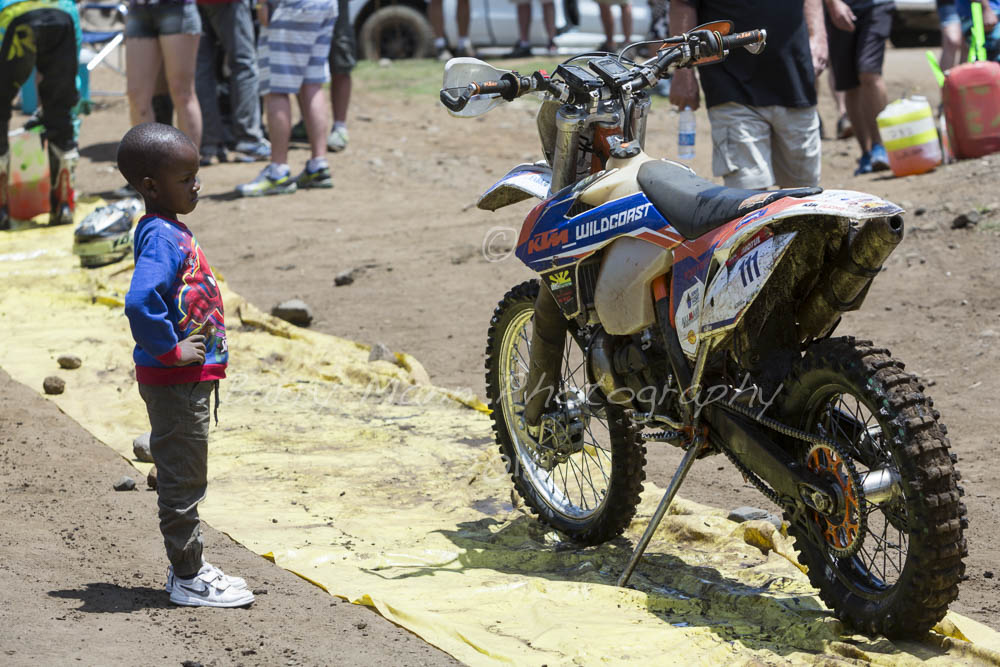
A young Basotho boy studies a bike during a refuelling stop at Makhaleng Causeway.
My special thanks go to Behan & Stefan Boshoff for giving me a reason to go. Behan was riding in his 2nd Roof of Africa race and finished in 10th place in the silver category, an amazing achievement. We managed to photograph him at the final fuel stop at Makhaleng Causeway before he headed off to the finish at Bushman’s Pass .




A selection of some of the other photos that I took on Day 3 at Makhaleng Causeway & the finish at Bushman’s Pass can be found below. I am already looking forward to returning for all 3 days next year, God willing.
Barry Mann – December 2016
Please note – All photos in this post are © Copyright Barry Mann Photography 2016 and may only be reproduced in any form with permission from Barry Mann. If you wish to purchase or reproduce any of images please contact me directly at barry@barrymannphotography.com.
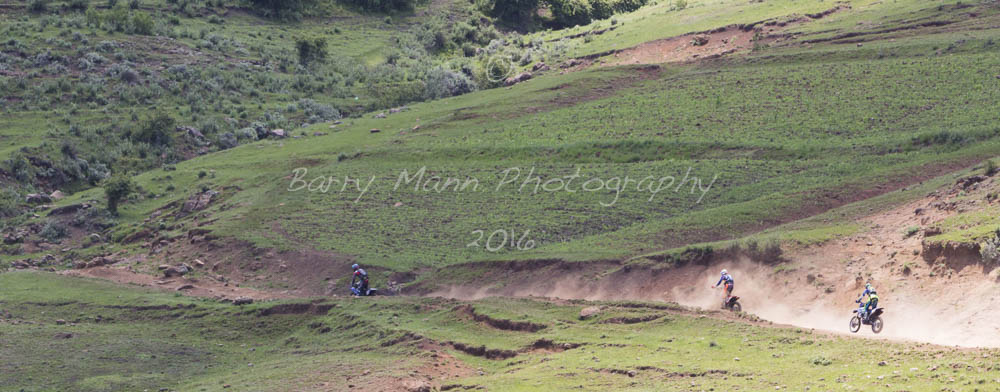
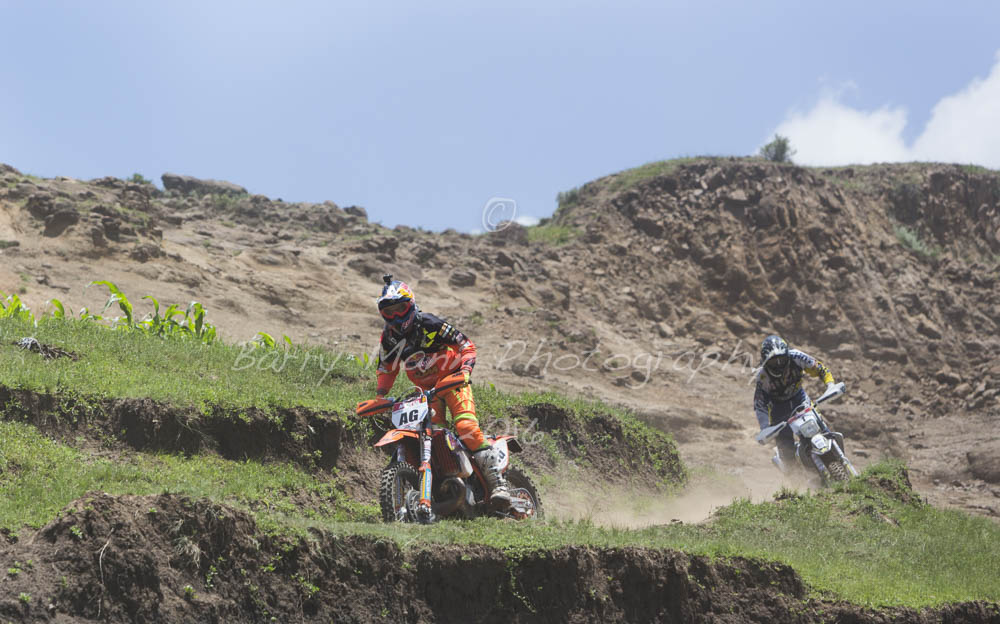


Graham Jarvis -leaves the Makhaleng Causeway fuelling stop and heads to the finish of the 2016 Roof of Africa Race at Bushman’s Pass, Lesotho.
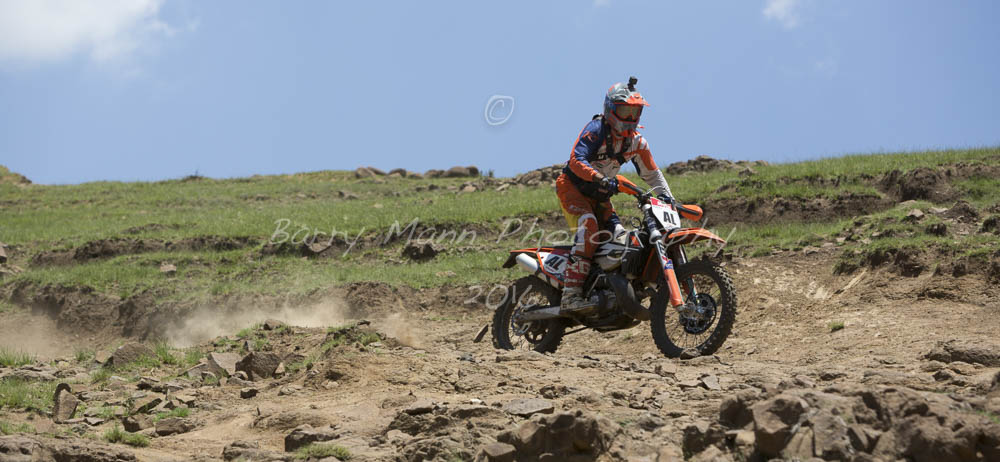
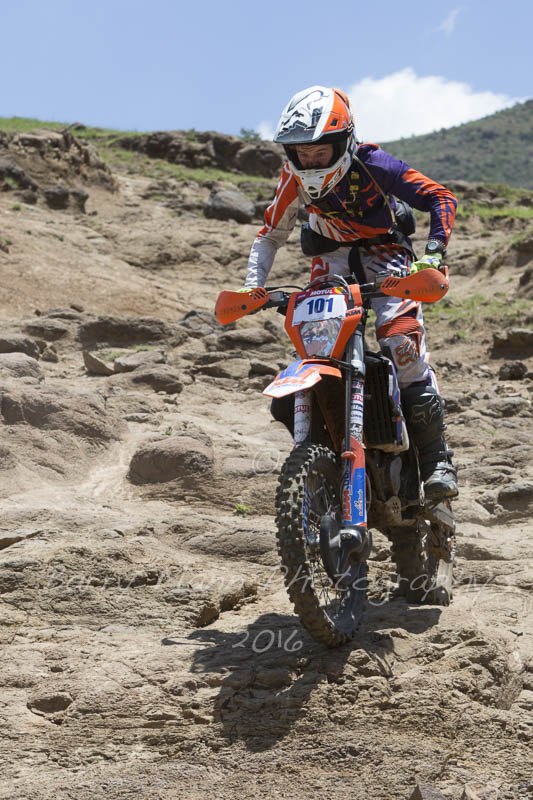
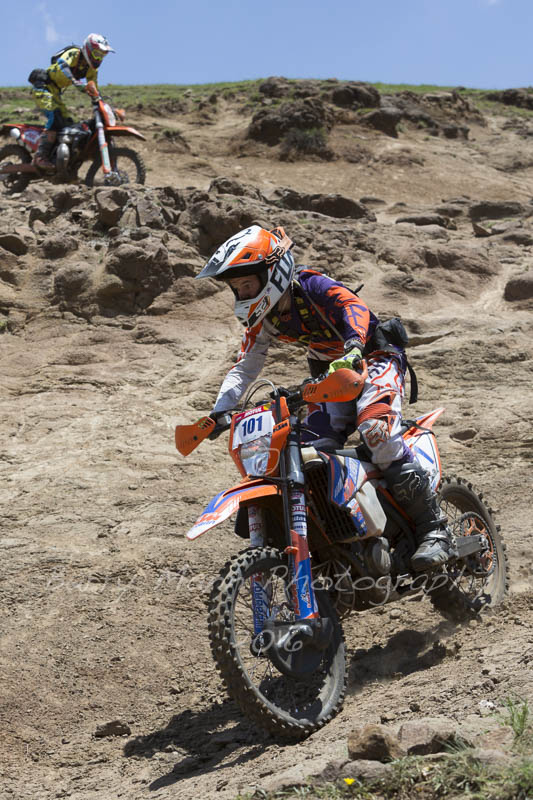
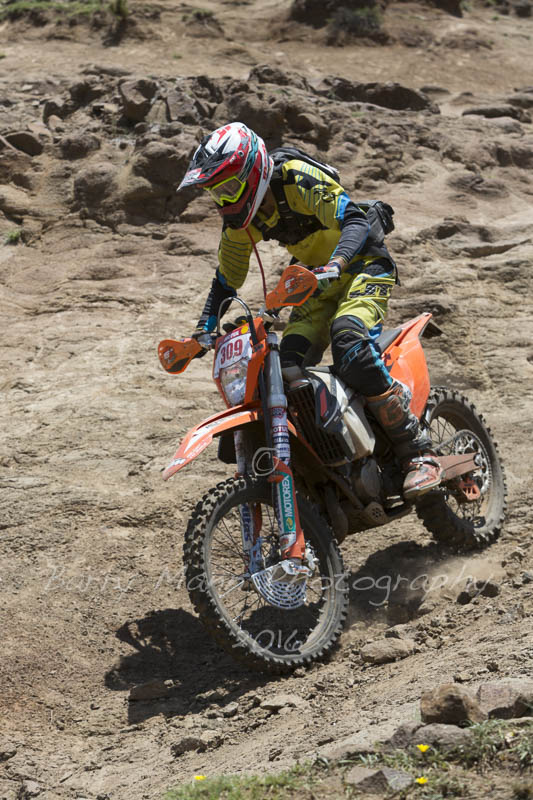
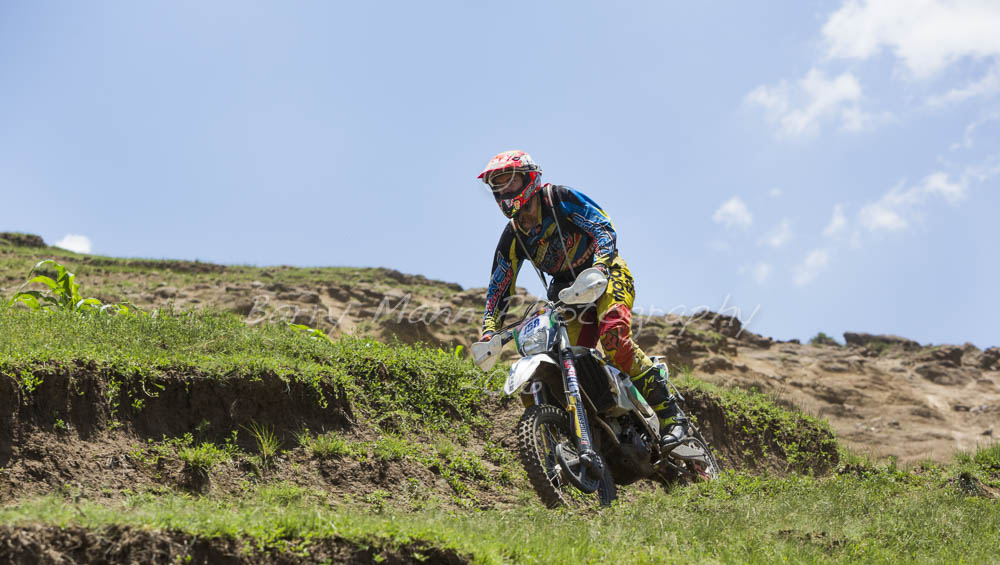







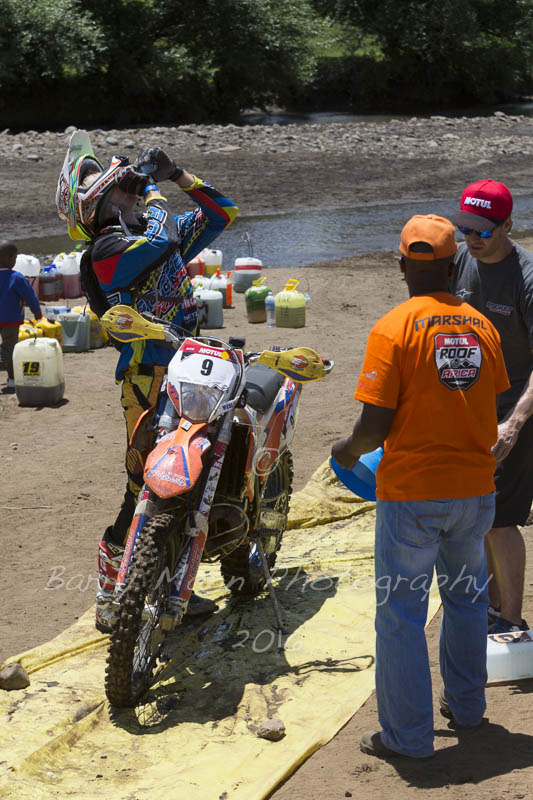

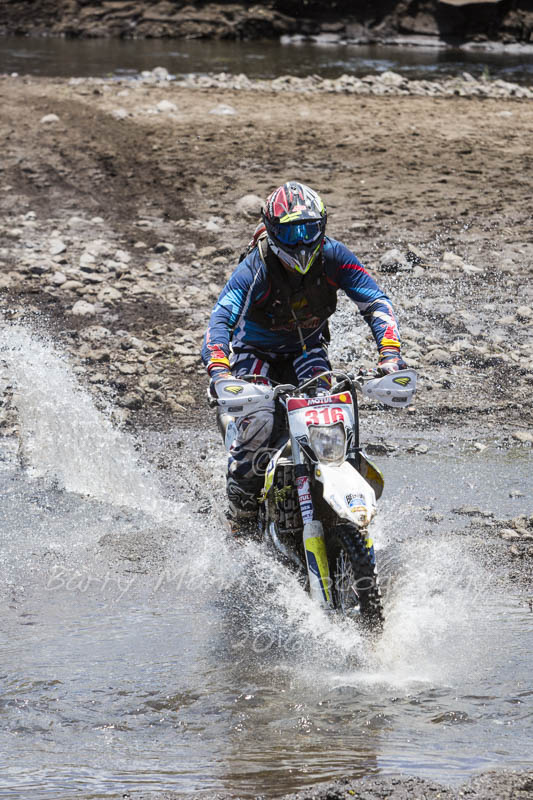

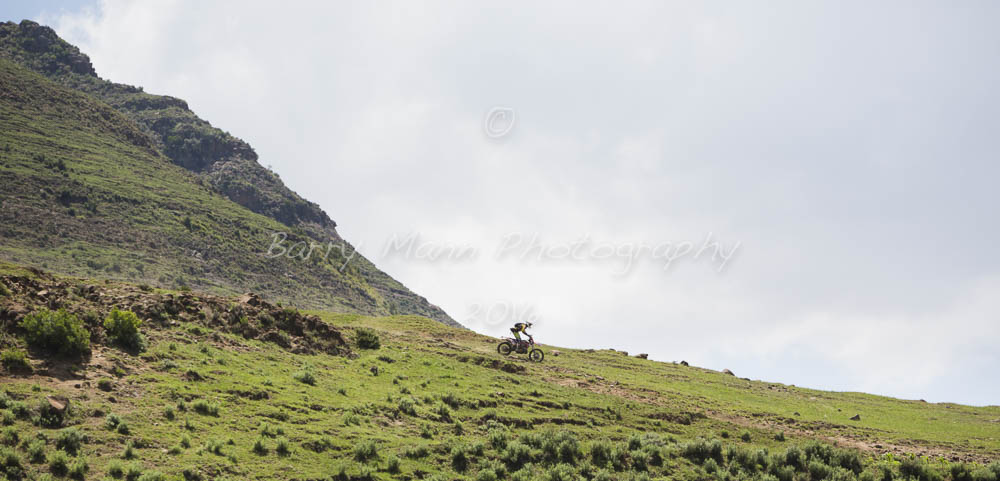

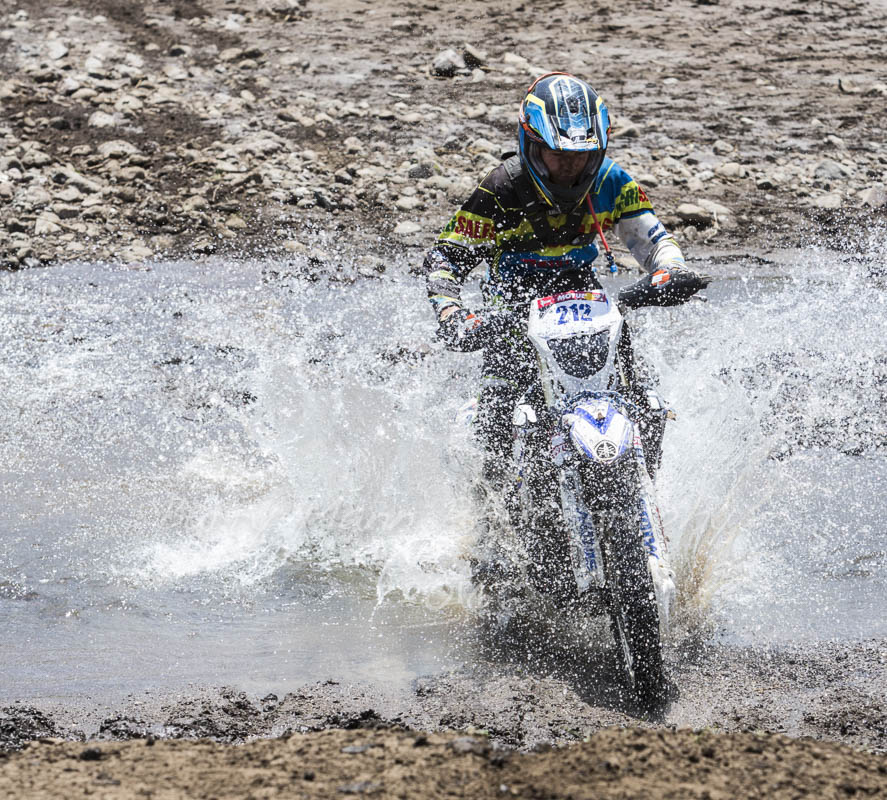
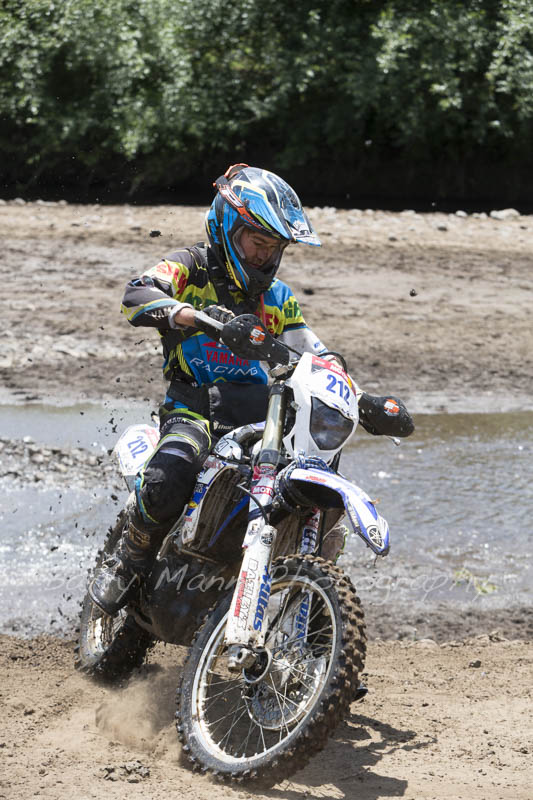


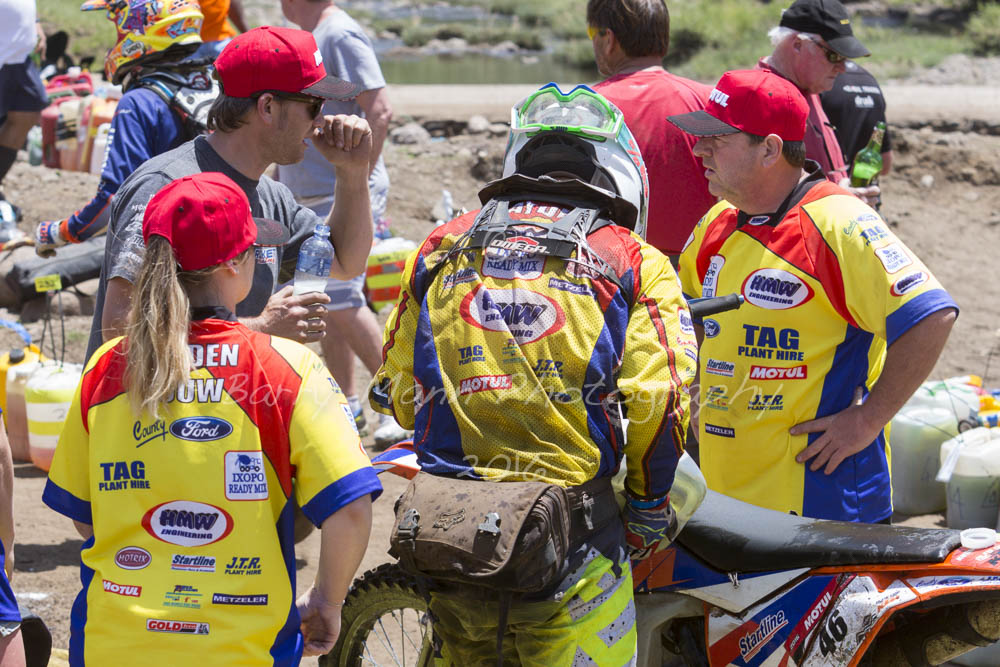

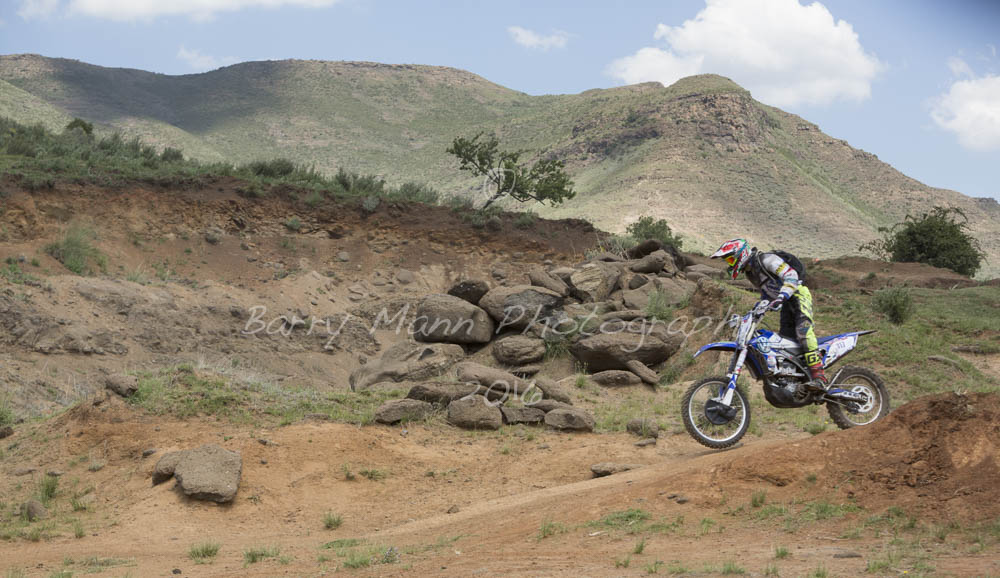
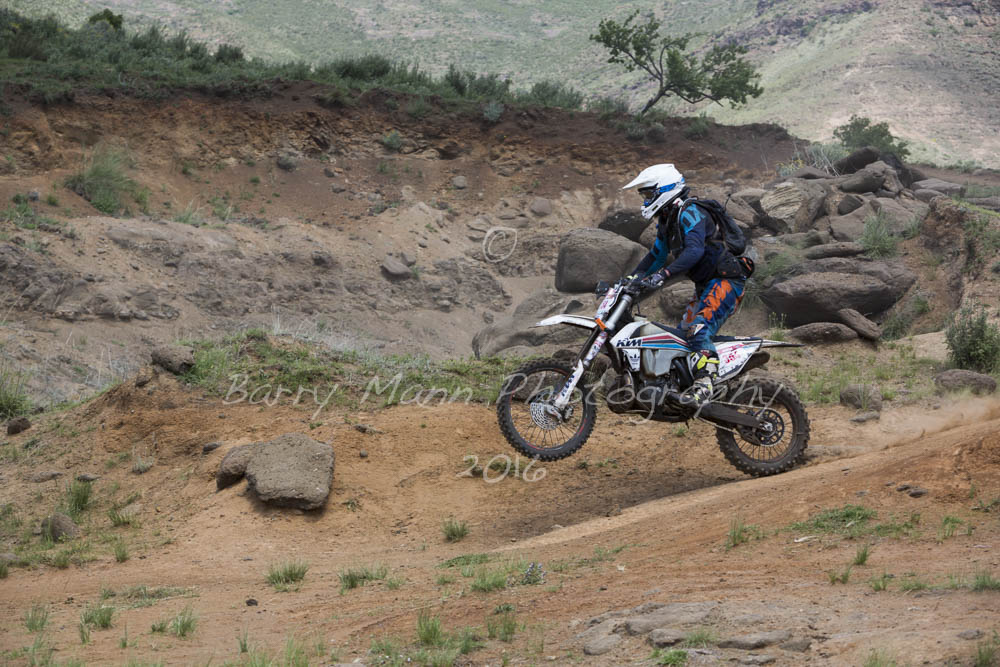

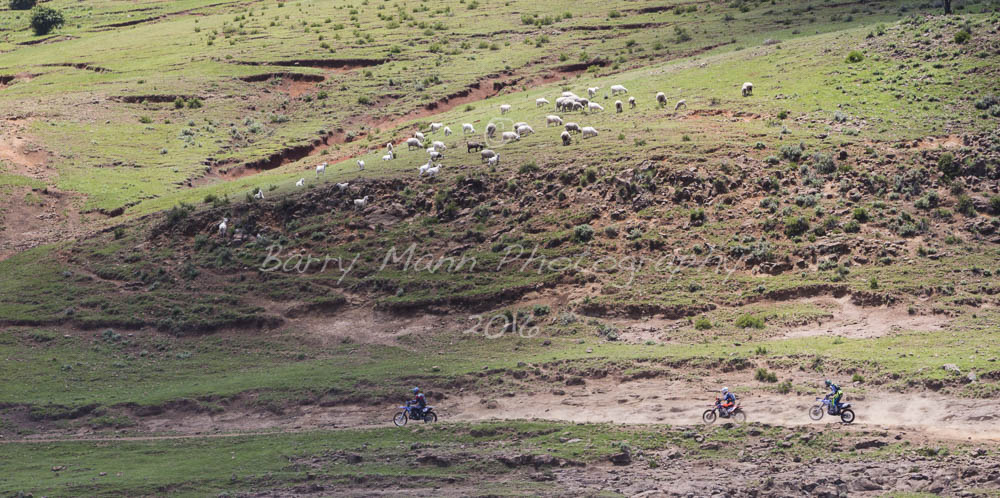


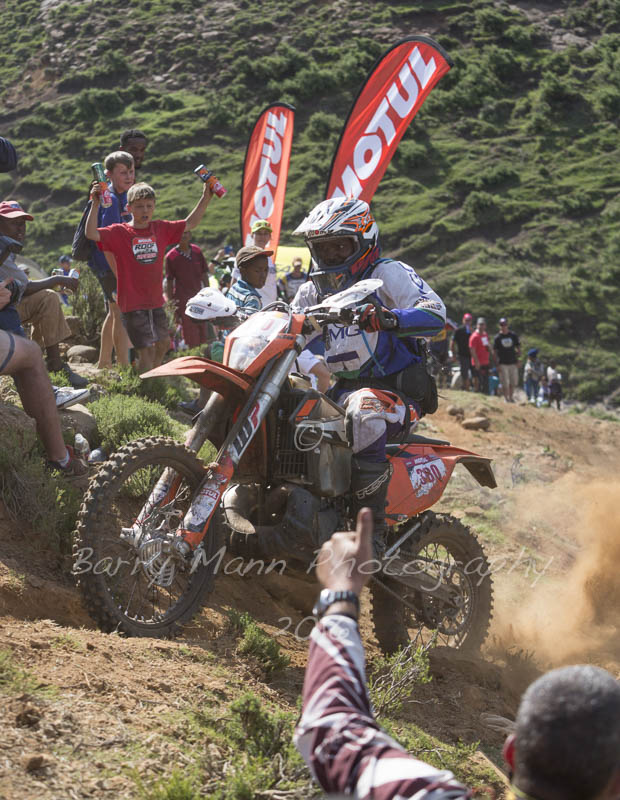
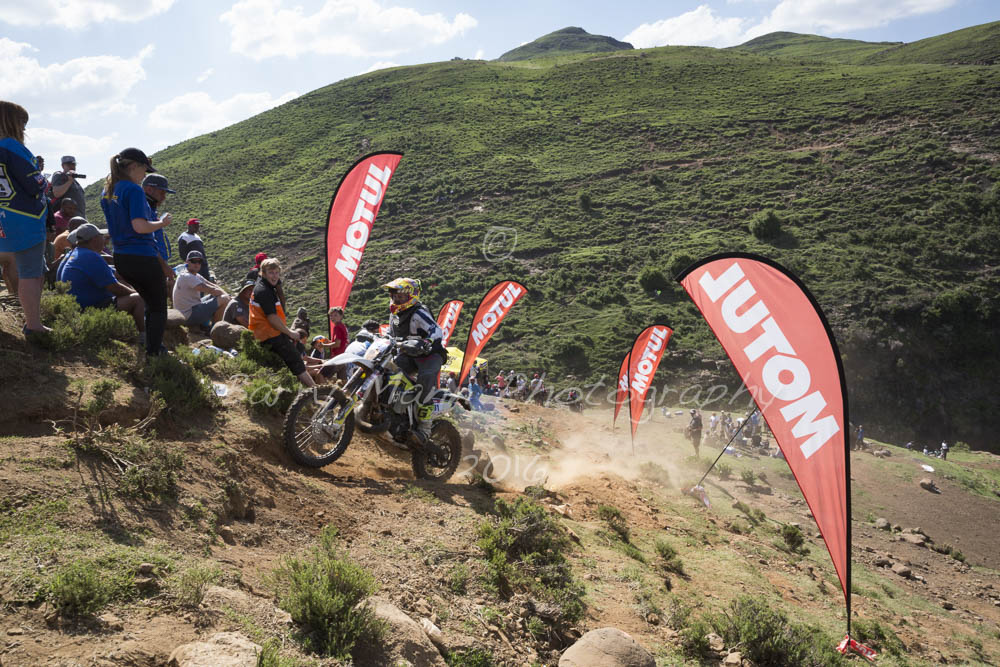

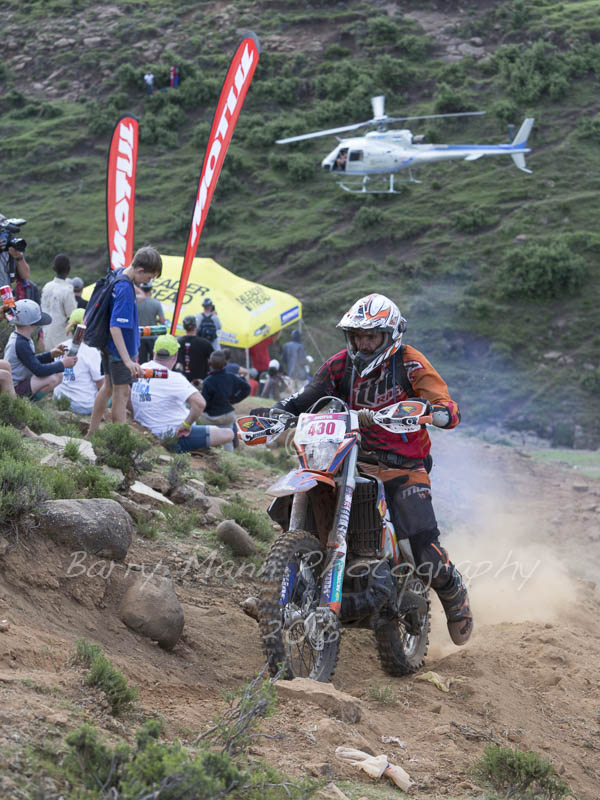

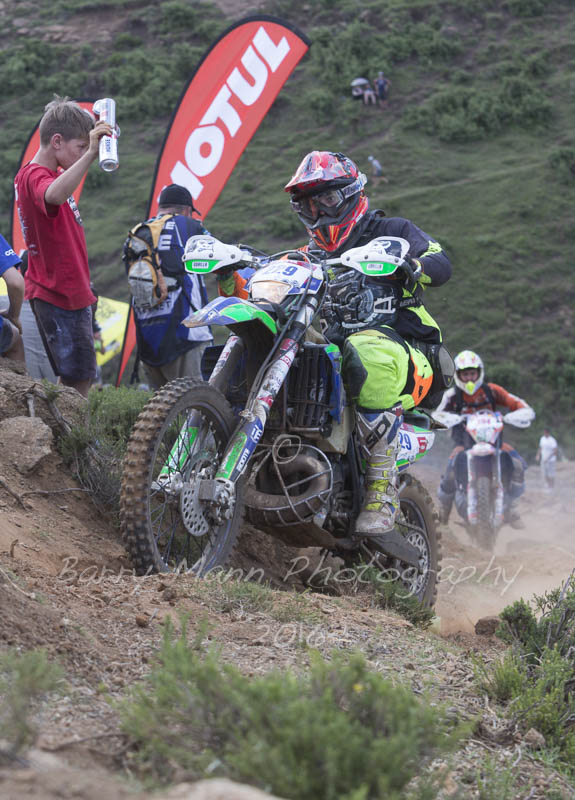
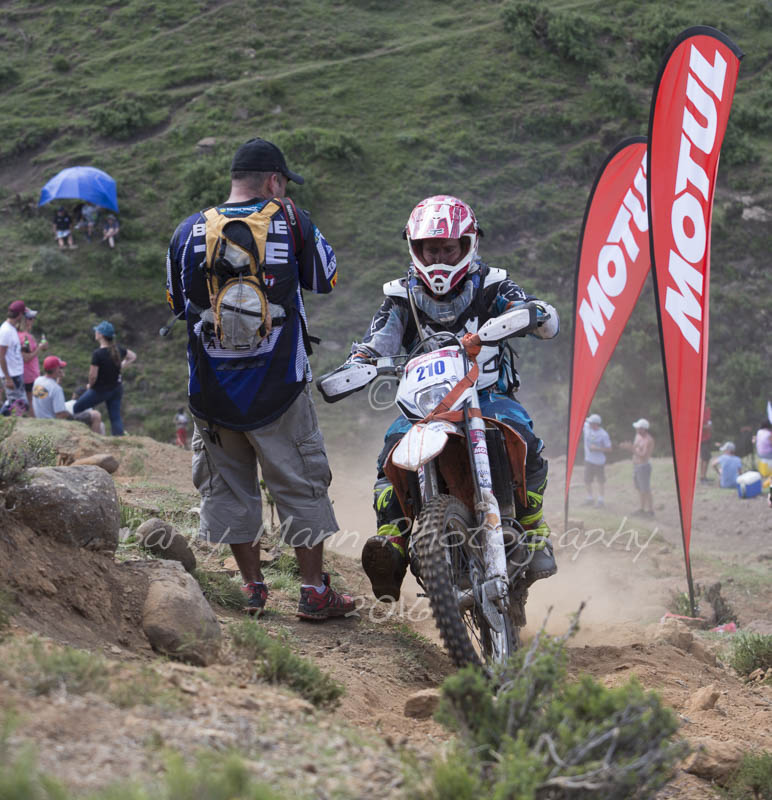
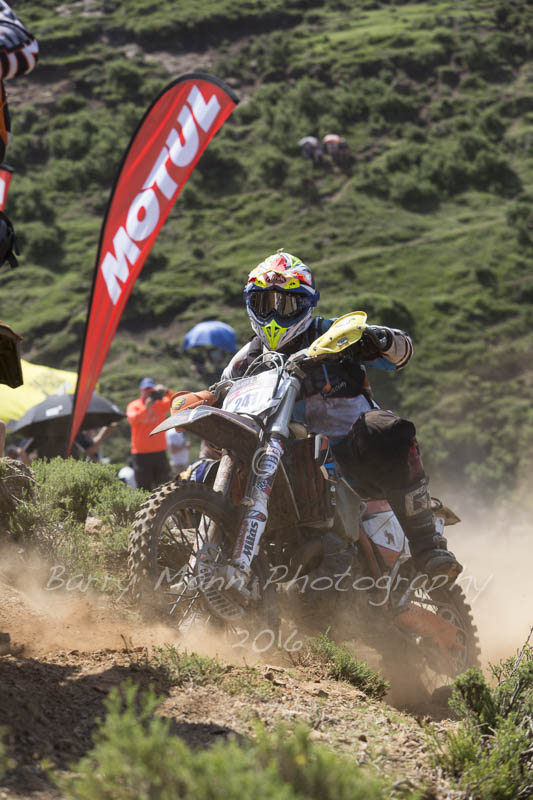
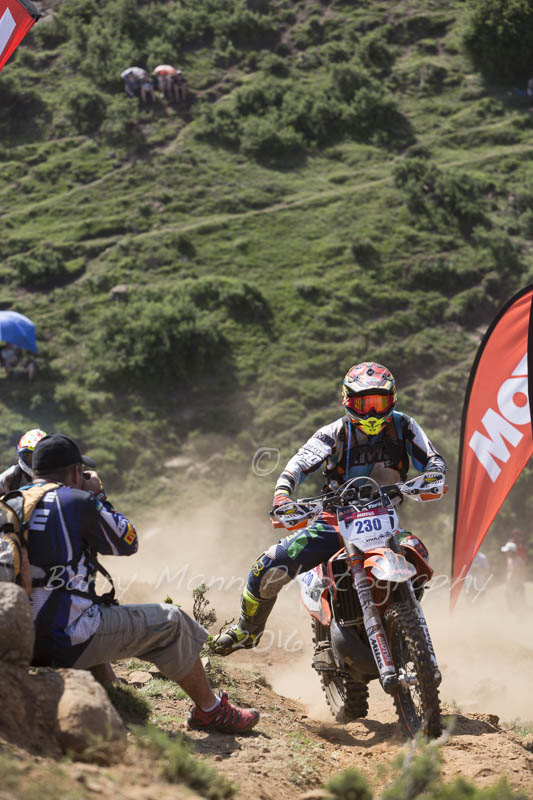


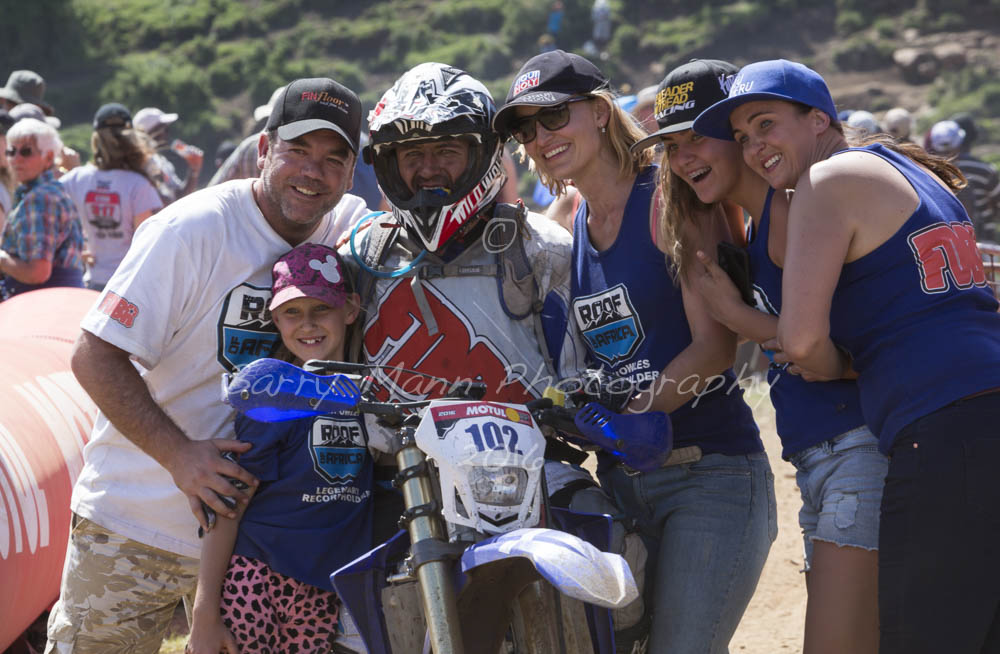
Dec 05, 2016 | Categories: Lesotho, Roof of Africa | Tags: Endurance, Graham Jarvis, Lesotho, Motorbike, Motul, Race, Roof of Africa | Comments Off on Racing the Roof of Africa – Every second counts
Feb 08, 2016 | Categories: Cricket, South Africa | Tags: Bloemfontein, cricket, day/night, Free State, Mangaung Oval, One Day International, South Africa v England | Comments Off on Who says cricket is boring…
Only one word needed about this evenings approaching storm…”Amazing!”

Stormy Sky, Bethesda Mission, Maphutseng, Lesotho
Jan 13, 2016 | Categories: Weather | Tags: clouds, sky, storm, weather | Comments Off on Stormy Skies
Traditionally in Lesotho the shepherds burn the mountains to call upon the spirits of the ancestors to bring the rains, which when they come result in new growth & grazing for the animals.
The fires won’t bring the much needed rain in this time of extreme drought & heat, but at least they provided us with a rather spectacular view in the Maphutseng Valley this evening!

Canon 5D MkIII EF 70-300 DO IS lens – 1/200th @ 5.6 ISO 1600 (handheld)

Fire on the Mountain – Canon 5D MkIII EF 70-300 DO IS lens – 25sec @ 5.6 ISO 200 (tripod)

Fire on the Mountain – Canon 5D MkIII EF 70-300 DO IS lens – 25sec @ f9 ISO 100 (tripod)

Fire on the Mountain – Canon 5D MkIII EF 70-300 DO IS lens – 47sec @ f9 ISO 100 (tripod)
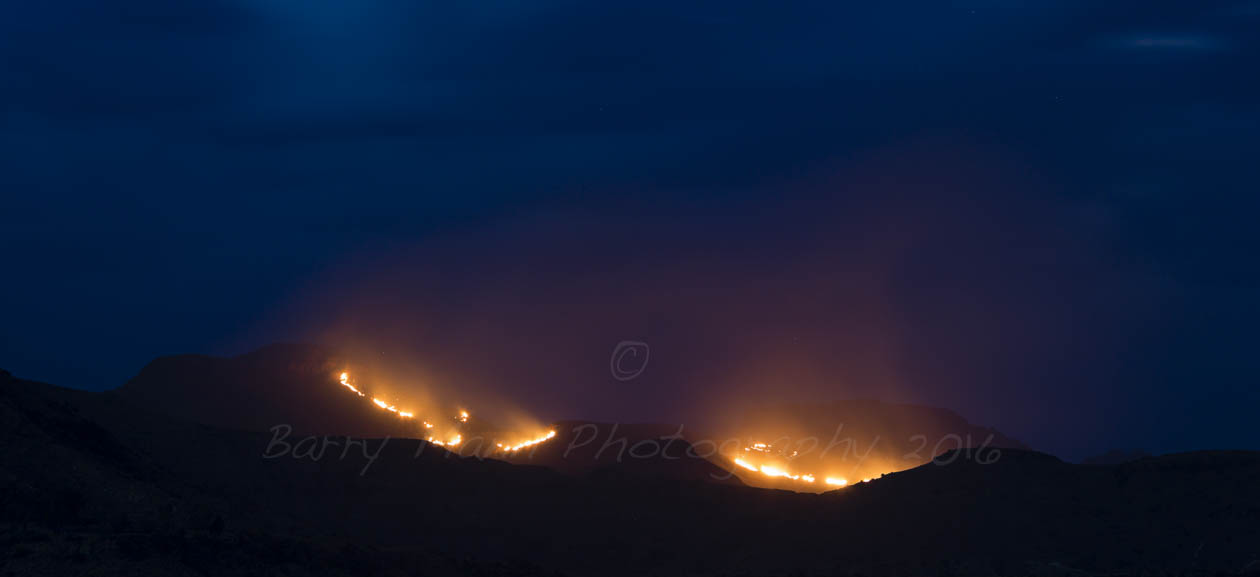
Fire on the Mountain – Canon 5D MkIII EF 70-300 DO IS lens – 53sec @ f9 ISO 100 (tripod)

Burning mountains in the Fire on the Mountain – Canon 5D MkIII EF 70-300 DO IS lens – 53sec @ f9 ISO 100 (tripod)

Burning mountains in the Maphutseng Valley, Fire on the Mountain – Canon 5D MkIII EF 70-300 DO IS lens – 64sec @ f9 ISO 100 (tripod)
All images on this site are © Copyright Barry Mann Photography 2016 and may not be used in any way without permission from Barry Mann.
Jan 05, 2016 | Categories: Fire, Water, Weather | Tags: Ancestor worship, Fire, Lesotho, Mountains, Shepherds | Comments Off on Fire on the Mountain…

Mohale Reservoir, Lesotho
The drought in Lesotho has yet to really hit the headlines outside of the country, with many choosing to focus on the drought within many areas of its larger neighbour, South Africa.
Having lived here for over 3 years what I do know is that every year water has tended to be in short supply after the long dry winters (April to October) & seeing people line their buckets up by the pump or tap in the hope of getting water every 2nd or 3rd day seems normal in late October/early November. Usually the shortage lasts for a few weeks at most as the springs are replenished by the spring rains which start falling in mid-October. These are the same rains which allow farmers to plant their crops each year.
This year has been different though The spring rains have not arrived and the Basotho people & their animals are getting increasingly desperate for water, the water they need just to survive, let alone to be able to plant the staple crops they depend upon. Here in the Maphutseng Valley, near Mohale’s Hoek, we have only received around 27mm of rain since 1 October, 1/10th of the rainfall that we would usually expect. All around life is tough & each day without rain only exacerbates the problem. My previous post, highlights some of the problems people are having accessing water.
In light of this and the fact that Lesotho has been in the news recently, signing an agreement with South Africa & Botswana to supply water to Botswana, I decided to take a trip to see how one of the 2 big reservoirs in Lesotho, Mohale Reservoir, was doing after such a long period with such little rain.
At 145 m high, Mohale Dam is quite a feat of engineering, being the highest concrete-faced rock-filled dam in Africa, and is the 2nd of a series of dams & reservoirs of the Lesotho Highlands Water Project. Katse Dam was the first to be completed in 1997 & Mohale followed 5 years later in 2002. When full it should hold 950 million m³ of water, which is pumped through a 32km underground tunnel system to top up Katse Reservoir. The water from Katse is then pumped through another transfer tunnel to Muela Reservoir which ultimately supplies the water hungry industry in the Gauteng Region of South Africa.

Mohale Reservoir & Dam, Lesotho (March 2010)
The reservoir is currently far less than full. The latest figures I can find for the reservoir levels are from the Lesotho Highland Water Project figures for 31 October 2015, which show that it was only 39% full & I can only imagine that with the lack of rain over the past 2 months that those levels have dropped even further. How much lower the reservoir levels can fall remains to be seen but if the drought continues it will get closer to reaching its minimum operating height of 2005m above sea level. Lets hope that the rains that are forecast in March will be sufficient to return the reservoir levels to the levels needed to sustain the water supply to South Africa & the communities downstream through the usually dry Lesotho winter.
The images below shows Mohale Reservoir in March 2010 & in December 2015.
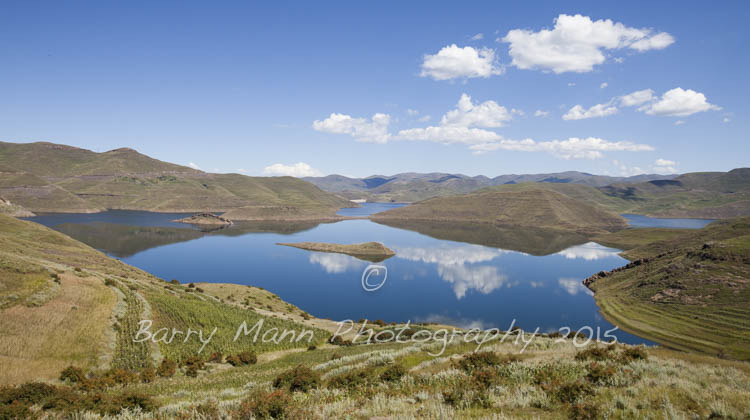
Mohale Reservoir, Lesotho (March 2010)

Mohale Reservoir, Lesotho (December 2015)

Road Bridge over Mohale Reservoir (March 2015)

The same road bridge in December 2015
One interesting consequence of the reservoir levels being much lower than normal is the re-appearence of some of the villages & river valleys that were flooded when the dam was constructed. One of the main settlements that was flooded was the village of Ha Seostsa, located on the banks of the Jorotane River. Villagers were resettled on higher ground by the government as part of the building of the dam & subsequent flooding of the area but now people are able to see where they used to live. The stone circles in the images are actually old traditional thatched rondavels which would have been occupied by generations of the same family for hundreds of years, whilst there are also signs of a few more modern block built e houses with their brightly painted walls. The bigger building which is usually under water is probably the old school or church.

The lost village of Ha Seotsa, abandoned has reappeared as water levels in Mohale Reservoir have dropped.

The lost village of Ha Seotsa, Mohale Reservoir, Lesotho

Buildings from the village of Ha Seotsa , Mohale Reservoir, Lesotho

The old village of Ha Seotsa , Mohale Reservoir, Lesotho
With the hill sides around Mohale looking dry & barren, stock owners & shepherds are making the most of the additional grazing land which has become available to them, as the reservoir levels have dropped. They will be hoping that the rains come soon to promote new growth but I suspect there will be many former residents looking down at their old fertile fields on the terraces next to the river, which used to provide them & their families with the crops that sustained them, reminiscing about what life used to be like in their old village community.

Cattle graze in the Jorotane River Valley in Lesotho (note the white ‘reservoir full’ level marker on the right of the image)
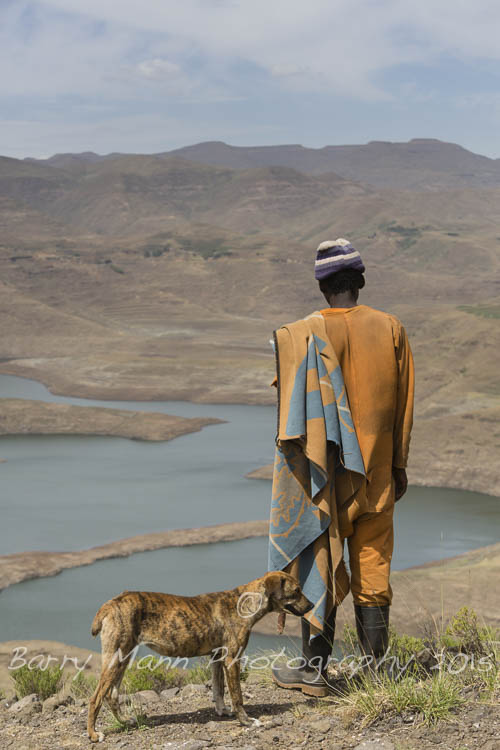
Shepherd looking down over the abandoned village of Ha Seotsa.
Barry Mann – December 2015
Dec 30, 2015 | Categories: Water, Weather | Tags: Abandoned village, Drought, Lesotho, Lesotho Highland Water Project, Mohale Reservoir, reservoir | Comments Off on Running low…
Early yesterday afternoon I could see that rain was coming. Not something that would excite most people back home in the UK but here in Lesotho we have been desperate for rain. It has been unseasonably hot & dry. Rivers & springs have been running dry & people across the country have been struggling to get water to drink.

The dried up Mekheleng River, Mohale’s Hoek, Lesotho
According to one local man on the banks of the now dry Mekheleng river, near Mohale’s Hoek, it has not been this dry since 1997 (the last time water stopped flowing). In some areas people have had to resort to digging in the sand in the riverbeds to find water to drink. A far cry from being able to turn on the tap in your house & get clean drinking water, like most of us are used to doing. Although the spring that supplies the project has a much reduced flow we have been able to top it up from our reserve spring. We are amongst the fortunate ones.
Elsewhere, farmers across the country have become increasingly desperate, as the spring rains that allow planting to take place have failed to materialize. The Lesotho Metrological Service recently sent out text (sms) messages to say that rain was not forecast until March next year. Being based at Growing Nations, a Conservation Agriculture demonstration farm, we check the on-line weather forecasts regularly, but we have learnt that rain predicted just a day or two earlier often does not appear, sliding down the Western side of the country or skirting to the North or South.

No water here…The river in Motsekoua, Lesotho
Rain was predicted the day before yesterday & although it rained in many parts of the country, Maphutseng remained dry so when it looked like it would rain I decided that I would try and capture the approaching storm from a slightly different angle.
I jumped in our Landy and headed through the village to the river with the aim of crossing it and gaining some height on the other side to look back across the valley. Progress to the river was painfully slow. The track to the river had got worse over the past year with some sections difficult to get through, especially when racing to beat the weather. Thankfully that is one advantage of driving a Landy & I made it safely to the river, where I stopped to grab a few photos of the lack of water, before driving up towards the new road on the other side of the valley.

Maphutseng River
As I climbed up away from the river I could see that the storm was fast approaching so I decided to stop and take some photos looking back towards Snake Mountain with the swirling clouds above.

Approaching storm, Maphutseng Valey
A friendly shepherd passed by on the way to the river whilst I was photographing the scene & he was happy to be photographed too, a bonus.
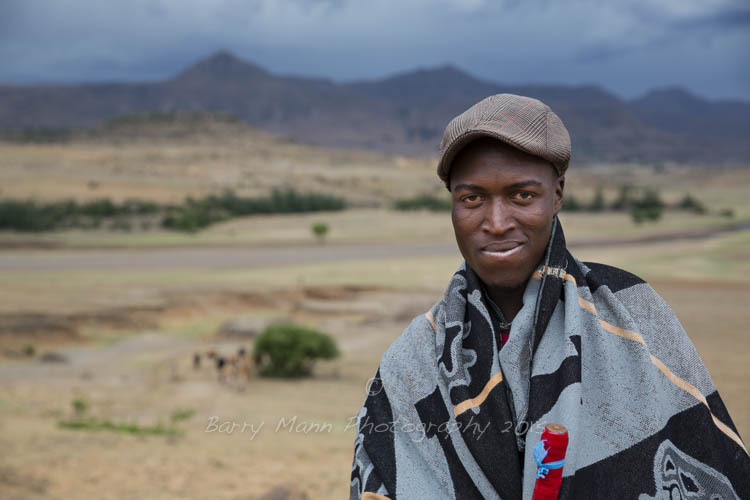

Looking for grazing in the dust
Back in the Landy I headed higher up the valley in the hope of a better viewpoint. Alas the storm was upon me before I found a better view. I could see it coming across the valley, preceded by gusting winds that picked up clouds of dust from the fields, along with that came the driving rain, which made any more photography impossible.
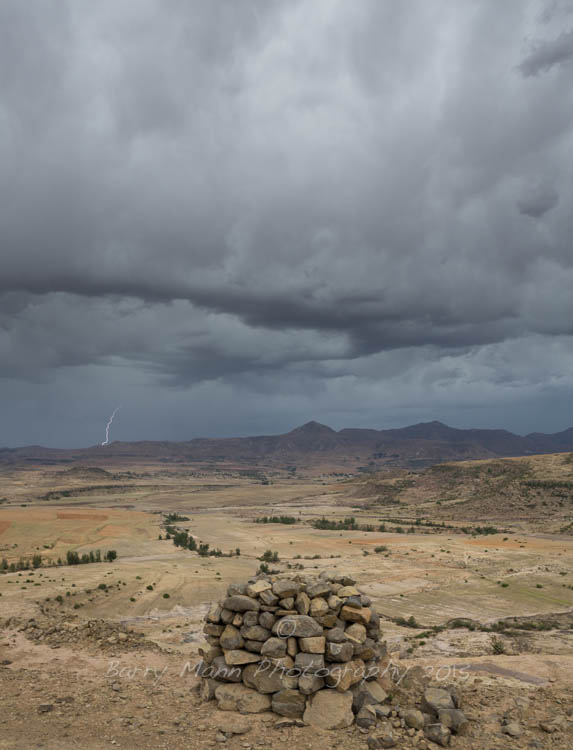
Approaching Storm
I stopped & gave a lift to a young couple to the next village who were grateful to have been rescued from the storm. I dropped them off at their newly thatched rondavel, hopefully a subject of future photos in better conditions, and drove on along the new road to Stanteng, the next village up the valley.
When I got home it was still raining so I started to process the photos & put together some of the panoramic images that I had taken. The rain continued & I didn’t really think that anything else would happen as the grey sky looked like it was set in for a while. I should of course have known better!
If you have read my previous blog posts you will know that after almost every storm something special happens. Yesterday was no exception. It was still raining when a shaft of sunlight lit up the valley & a beautiful rainbow formed against the mountain backdrop.
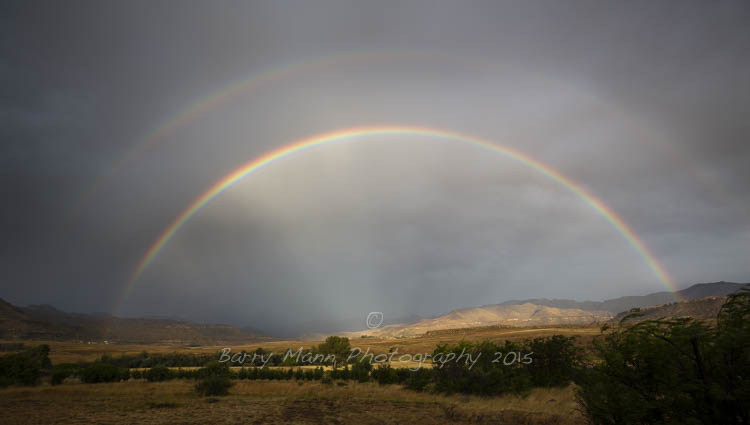
After the rainbow faded, when most people would have turned away, I stayed & watched, transfixed by the wonder of the ever changing light on the mountains and the clouds as they raced across the sky. Praising God for his amazing creation.
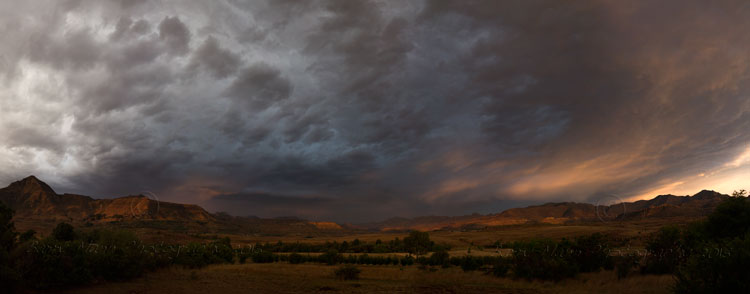
Evening light after the storm
We still need more rain for the farmers to plant & the springs to be refreshed but we are grateful for the rain that fell yesterday. For everyone’s sake here in Lesotho we hope & pray that it will arrive soon.
Barry
Nov 21, 2015 | Categories: Weather | Tags: Drought, dry, rain, relief, storm, thunderstorm, water, weather | Comments Off on A Welcome Relief…
For those of you who were wondering how the wonderful day of coolness & rain ended (see previous post)…
…Well as is often the case the sun broke through just at the right moment producing spectacular golden lighting across the valley & with it came a rather feint rainbow.
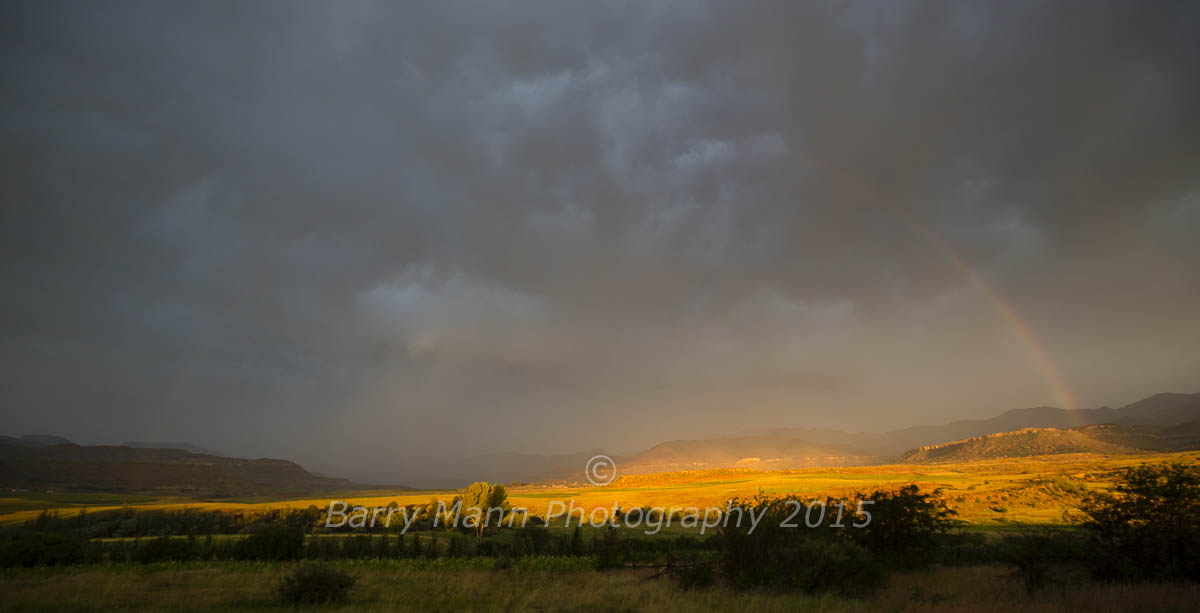
Lightning & rainbow, Maphutseng Valley, Lesotho
© Barry Mann Photography 2015
Canon 5D MkIII, 16-35mm f2.8 L Lens. 16mm, 1/60s @ f5.0 (handheld) ISO 800
Now the rainbow was not perfect but if you combine that with a thunderstorm, the picture improves a little!

Lightning & rainbow, Maphutseng Valley, Lesotho
© Barry Mann Photography 2015
Canon 5D MkIII, 16-35mm f2.8 L Lens. 16mm, 1/100s @ f5.0 (handheld) ISO 800
Even as the sun set the lighting was pretty dramatic. The perfect end to the day & definitely worth the wait.
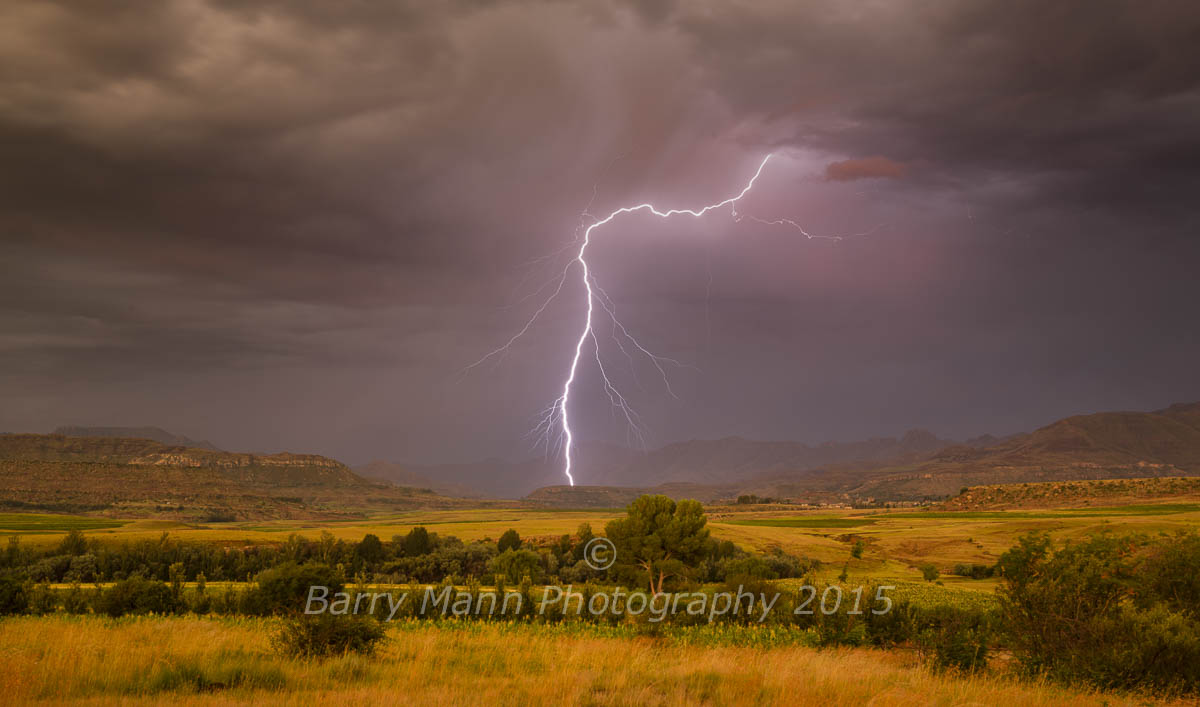
Thunderstorm in the Maphutseng Valley, Lesotho
© Barry Mann Photography 2015
Canon 5D MkIII, 16-35mm f2.8 L Lens. 35mm, 3.2s @ f5.0 (tripod) ISO 50
Feb 15, 2015 | Categories: Weather | Tags: Canon 5D MkIII, Lesotho, lightning, Maphutseng Valley, patience, rainbow, thunderstorm, weather | Comments Off on The perfect ending…
Few people, certainly those of you who are back in the UK, would think that a grey cloudy day of rain and thunderstorms would be something to write about, let alone photograph. Well for us it is .

A grey view looking across the Maphutseng Valley, Lesotho
Over the last couple of weeks it has been hot, hot, hot (36, 37, 37, 37 & 36ºC over the past 5 days highs) so when rain finally arrived yesterday evening it was a much welcome relief not only for the sun scorched crops but also for ourselves. Waking up to a cool breeze and grey skies was blissful & walking through our local town of Mohale’s Hoek in the pouring rain without a coat was simply refreshing.
Of course rain presents its challenges to the photographer, not least keeping equipment dry but a grey town on a grey day can also look pretty drab. Since my main purpose of visiting town was running errands I could have left my camera at home but Murphy’s law, or rather my photographer’s instinct (which I prefer) says that if you do that you will be guaranteed to miss something amazing along the way. So I always take my camera with me ‘just in case’!
It was raining pretty heavily once we arrived in town and to be honest there really wasn’t much to photograph apart from a couple record shots and one of the lady who sits faithfully everyday at her vegetable stall outside the local supermarket. Since we always greet each other I decided to ask her whether I could take a photograph of her, which she duly obliged and was thrilled to see herself on the camera, even if it wasn’t the best of photos. I could have gone looking for more but that wasn’t my primary purpose for being there on this occasion.
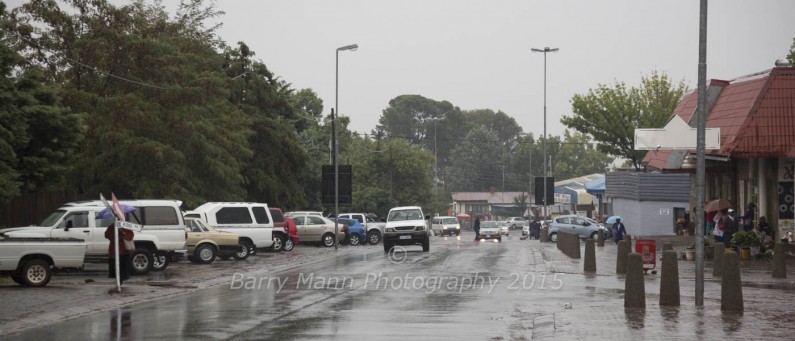
Mohale’s Hoek in the rain

Woman selling fruit & vegetables at her stall in Mohale’s Hoek, Lesotho
Now, depending on how well honed your photographer’s instinct is it will also tell you that grey days do not last. At some point during the day the clouds will break and it is usually at that point something special happens. Sometimes it is rays of golden light shining through onto the mountains, a beautiful rainbow, or a glorious sunset at the end of the day. Today however it was neither, it was simply the amazing clouds bubbling up during a break between the storms. They did not last long and thankfully I noticed them just at the right time in order to capture them.

Stormy weather, Maphutseng Valley, Lesotho
So, if in doubt carry your camera even in the poorest of conditions. Your perseverance & patience will pay off. Now I am ready & waiting for the distant rumble of thunder to turn into the perfect dusk storm. Let’s see what happens…
Feb 13, 2015 | Categories: Weather | Tags: grey, instinct, patience, Perseverance, rain, weather | Comments Off on Bliss…
Sometimes when you are photographing odd things happen…
I was photographing another storm this evening with some long exposures & the camera set on a tripod. Only when I downloaded the images & looked at them in Lightroom did I notice something strange about this one…
Any suggestions. It was a 20sec exposure & logically you would think the camera had moved given the identical shape of the lightning bolts but why are they all not replicated (look at the side bolts on the left of the main bolt) & given that a lightning bolt is usually only for a split second that would not explain it. Seems impossible that the bolts were actually like this. Could this be a reflection inside the camera. Very very strange. If you have any suggestions, please let me know.
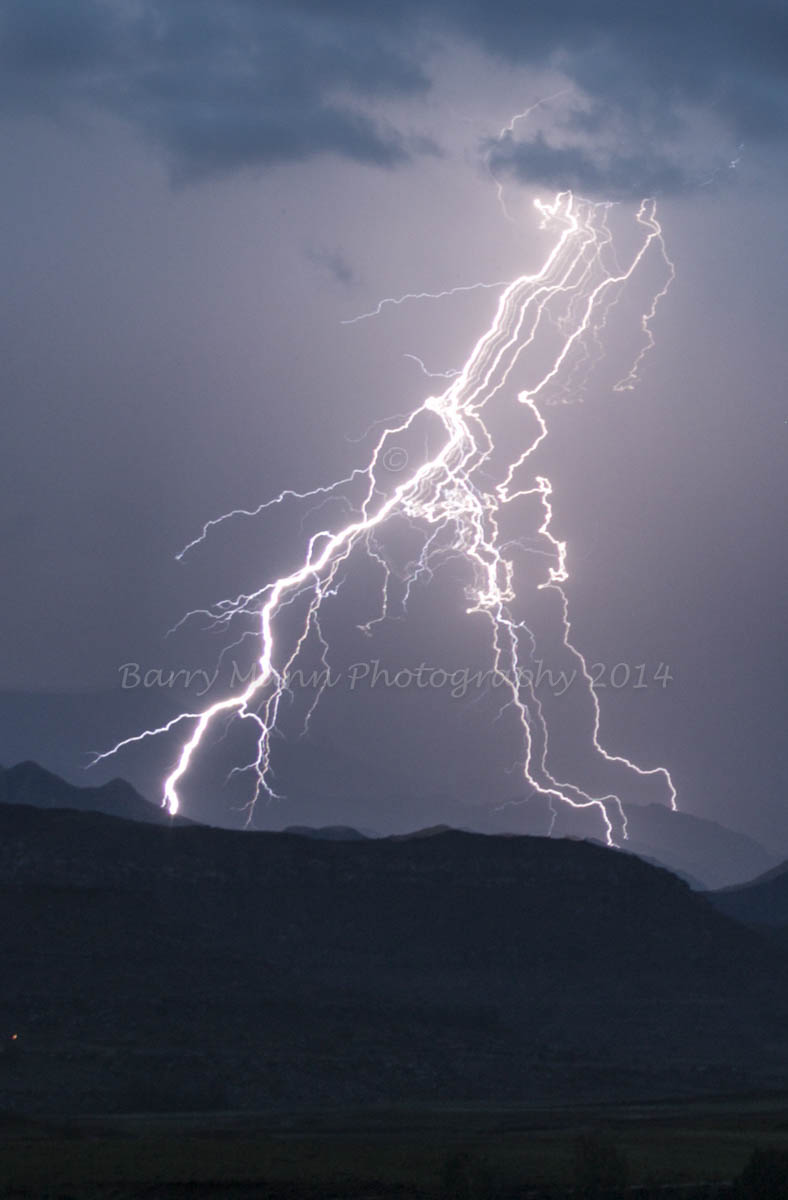
Strange phenomenon?
Dec 11, 2014 | Categories: Weather | Tags: lightning, storm | Comments Off on Strange phenomenon
Today’s second big storm of the afternoon in the Maphutseng Valley produced good steady rain which was great for the crops, unlike the earlier hail storm, but was nothing special to photograph.
15 minutes before sunset I noticed a yellow tinge appearing in the sky to the West and thought to myself “this could be interesting” so I got ready to go out to photograph the sunset, just in case. I know from experience here that storms often seem to break in the final few minutes before sunset to often stunning effect so I grabbed my camera bag & car keys and as I stepped outside onto our stoep I was confronted by the most amazing sight, a perfect double rainbow set in a dramatic yellow sky. Whatever you think about photographing rainbows, this was truly stunning.
I quickly changed lens to my 16-35mm wide angle to be able to fit the entire rainbow in but this is where I had a problem. I went to photograph the rainbow but the rain was driving straight into the lens & there was nothing I could do to stop it. So this was the best I could get. Not the perfect photo that I wanted at all!
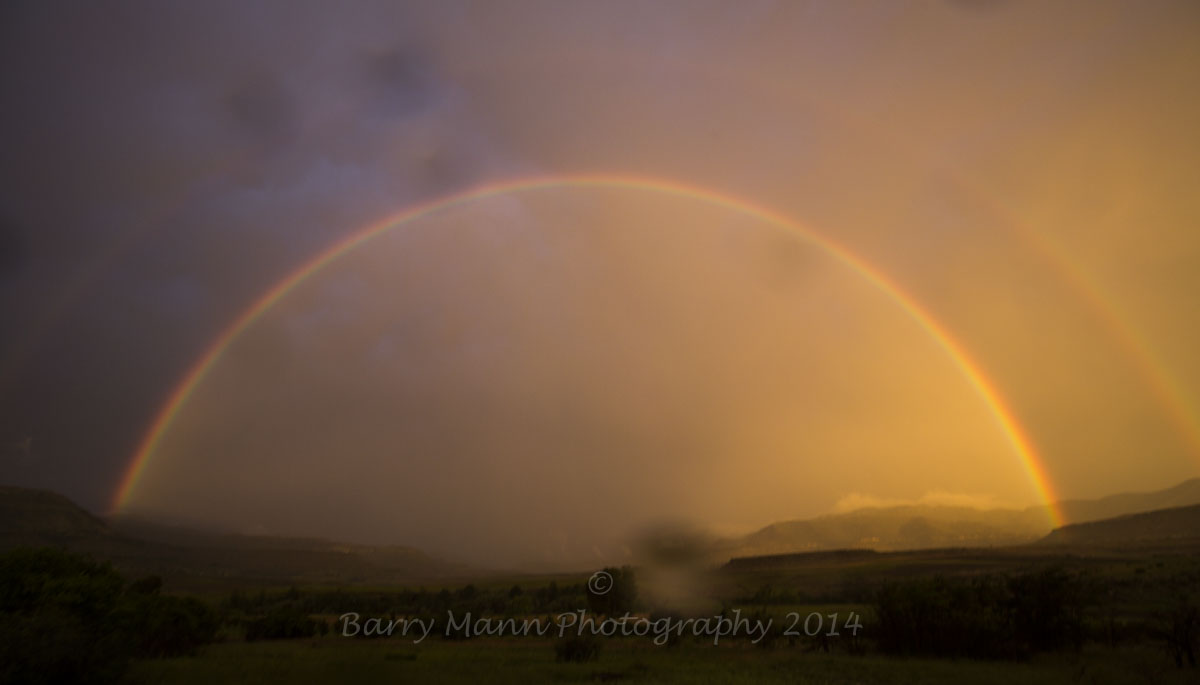
Double rainbow, Maphutseng Valley, Lesotho © Barry Mann Photography 2014
Now it’s true that sometimes as a photographer you just have to look and take in the beauty before your eyes & consign the view to your memory, not the memory card.
Many would give up at his point but knowing the light & the location I thought there may be other opportunities.
Time was of the essence, I jumped into the Landy and headed out to find a view across the valley in the opposite direction. I found a location & here I even managed to grab a very different photo of the rainbow in the quickly changing lighting conditions but still the cold rain was blowing in my face.
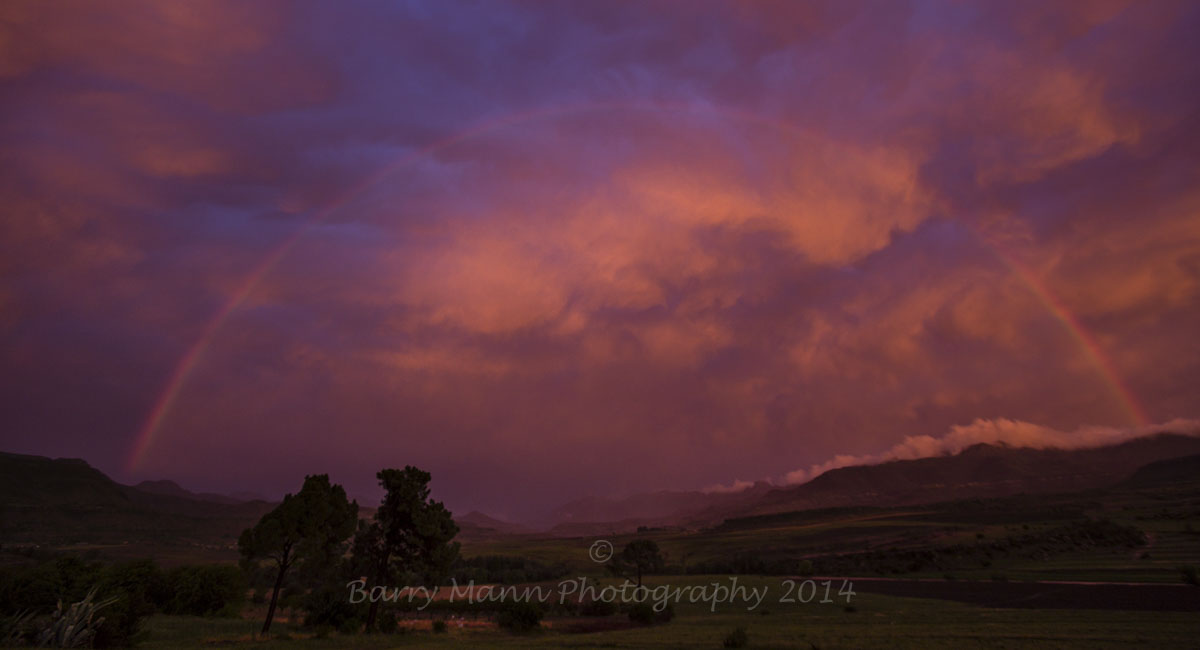
Evening rainbow, Maphutseng Valley, Lesotho © Barry Mann Photography 2014
So I turned my camera in the opposite direction and this is where the real image of the evening was to be found…a beautiful fiery sunset mountain. It was the perfect end to a frantic 15 minutes and the moral of the story…If the perfect shot is impossible don’t give up, think about the light, chase after it and find yourself a different angle. You never know it may just be the better option! It was for me tonight.
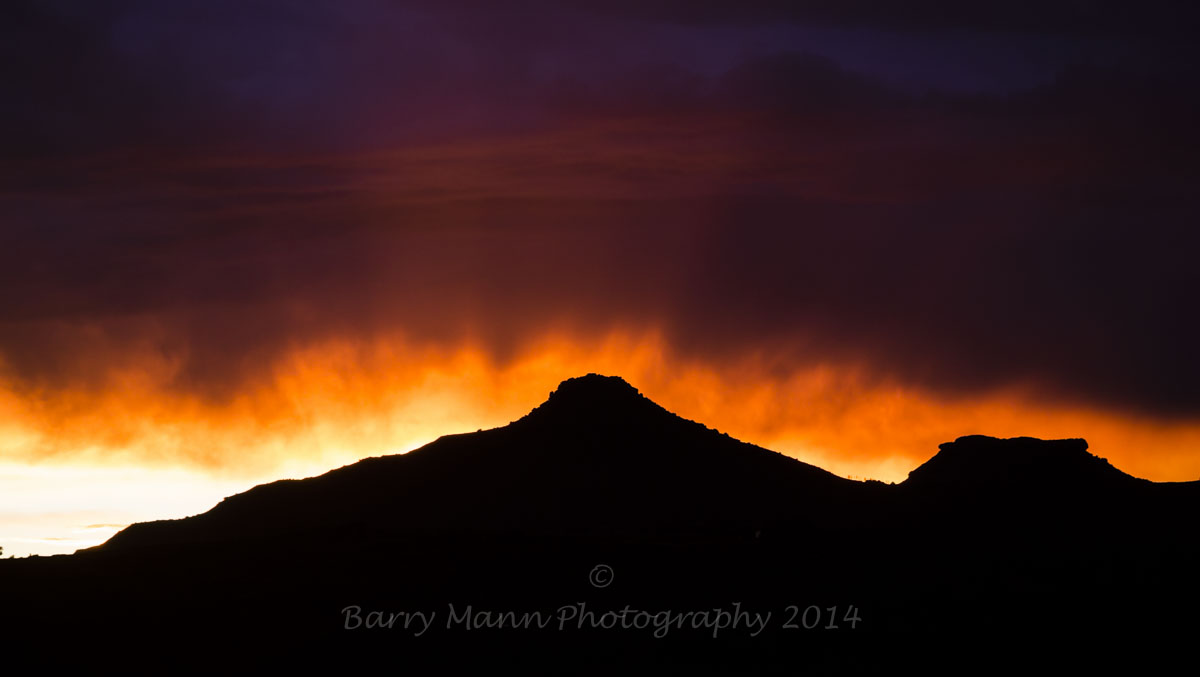
Fiery sunset mountain, Maphutseng Valley, Lesotho © Barry Mann Photography 2014
Dec 10, 2014 | Categories: Weather | Tags: don't give up, impossible, light, rainbow, sunset | Comments Off on Do not despair…




























































